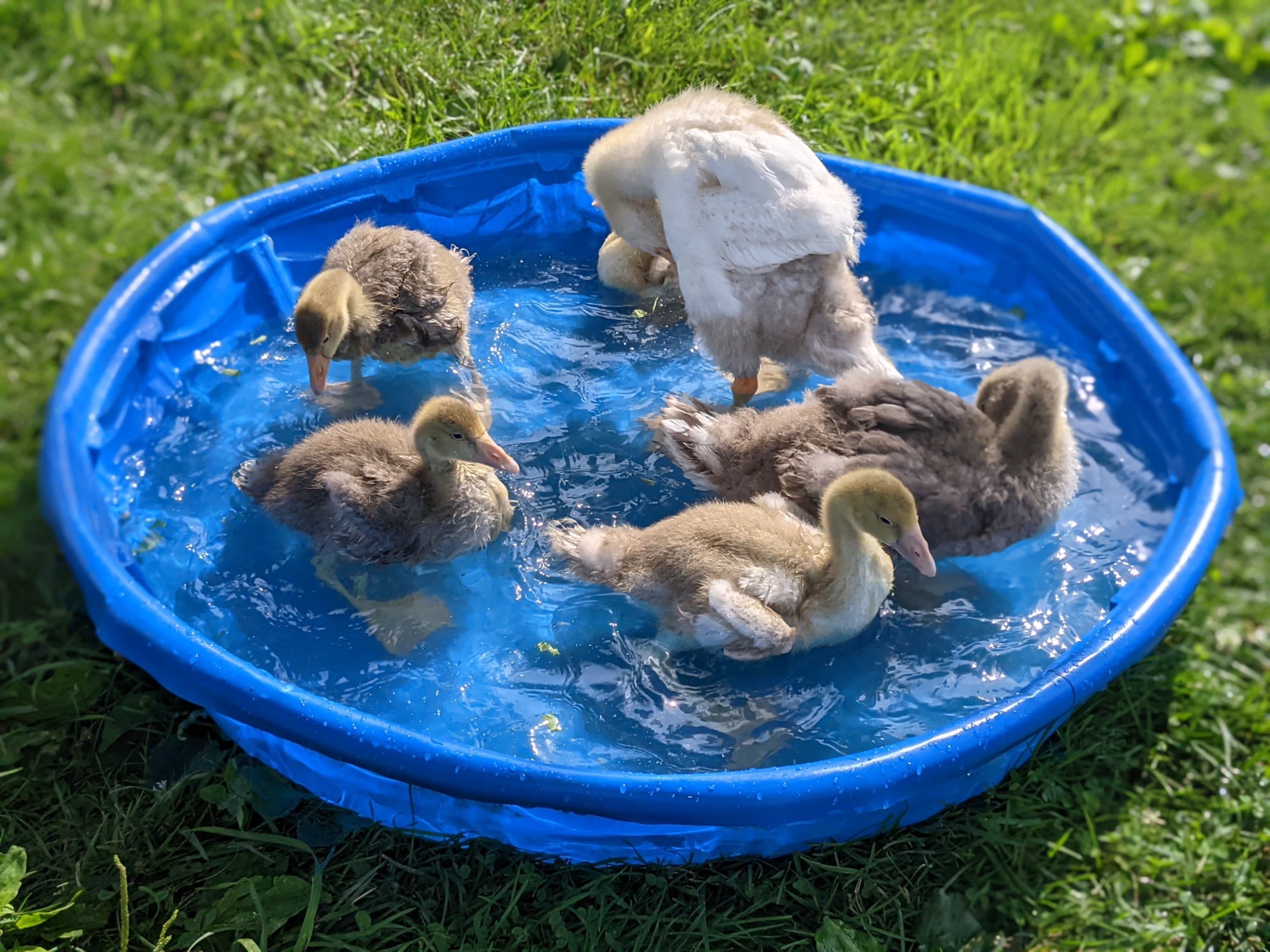
It’s always entertaining when young goslings, still unsure about swimming, have unfettered (but supervised) access to a kiddie pool. They may start out wary, but once they’re in the water, instinct kicks in!
Based on my experience with both geese and ducks, geese are less water-intensive when it comes to bathing needs. I think ducks are happiest (and healthiest) with a daily swim, while geese seem content with some full-body splashing time every few days; in very hot weather, daily pool time may be needed.
Ducks that don’t have adequate access to water can have feather problems – like wet feather – and look dirty and bedraggled because they’ll find muddy puddles to play in, even if they can’t have a bath afterward; they may also develop foamy eyes or respiratory issues if they can’t clear their nares properly. Since we don’t have a pond onsite, bath time means putting out multiple plastic pools and then dumping them at the end of the day.
One note about the kiddie pools: they’re not built to last. Inevitably, it seems, they develop cracks, leak, and have to be retired. Once they’re no longer suitable for bathing, they can be repurposed as short-term indoor brooders, and are particularly handy for containing the wet messes young waterfowl will create.
The pool may look small and shallow, and it is – remember, baby waterfowl can drown if they’re unable to get out of the water. Until they’re fully feathered, they’re not as buoyant and are prone to chilling, so young waterfowl must always be monitored when they have access to swimming water. I’ve read more than one sad story of a new duck raiser who finds their ducklings have drowned because they were in water they couldn’t get out of…so they swam around until exhausted and/or chilled and then sank.
This heartbreaking scenario may be prevented by implementing some simple measures like creating a shallow area in the kiddie “pool” where the duckling or gosling can step out of the water: by placing a plastic kiddie pool on a slope so that just one end fills with water and the other end is dry, waterfowl can get out of the water to dry off and rest. Other options include placing objects like pavers in the pool to form a high area where the babies can get out of the water, creating “stairs” at one end so they can climb out, or adding a floating platform.
For very young waterfowl, my preference is to go with the least risky option: shallow water that extends to only part of the pool (only inches deep, more for wading and splashing than swimming), with part of the pool dry. Another option is to use a very shallow pan, like a clean cat litter pan, and only fill with a few inches of water. Waterfowl will have fun in the equivalent of a puddle, so if active supervision isn’t possible, I only provide accessible water sources that are very shallow.
Obviously, this gosling group is older and large enough to jump right out of a medium-sized pool (albeit clumsily!) and onto the grass, so drowning danger is minimal. Nonetheless, I still wouldn’t leave them unsupervised with the pool because you just never know. Fortunately, a good time was had by all young fowl, safely.
